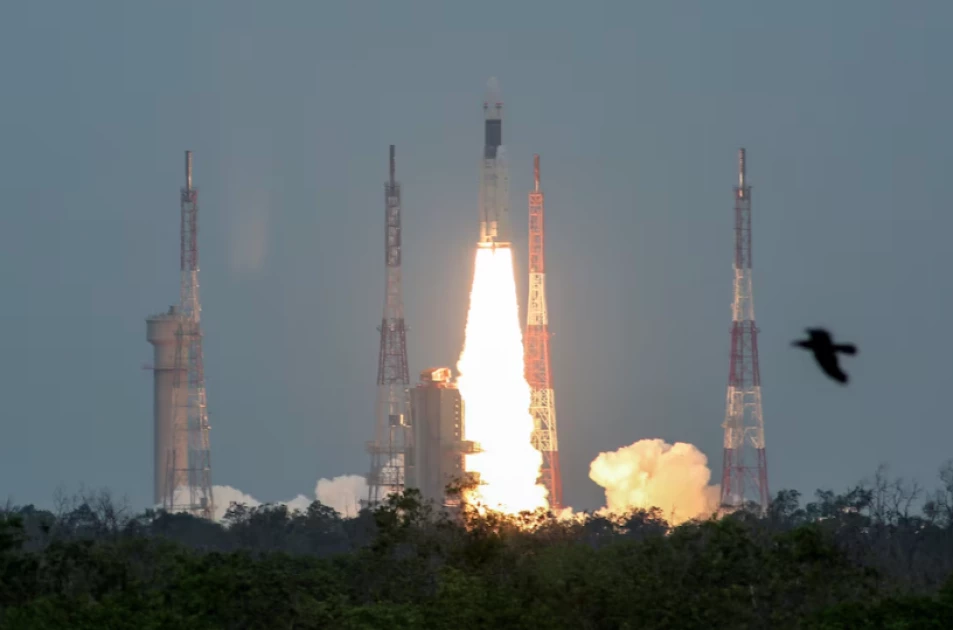What is helium and why is it used in rockets?

India's Geosynchronous Satellite Launch Vehicle Mk III-M1 blasts off carrying Chandrayaan-2, from the Satish Dhawan Space Centre at Sriharikota, India, July 22, 2019. REUTERS/P. Ravikumar/File Photo

Audio By Vocalize
Two NASA astronauts
aboard Boeing's Starliner will stay on the
International Space Station for months, because of a faulty propulsion
system whose problems included helium leaks. Back on Earth, SpaceX's Polaris
Dawn mission has been delayed because of helium issues on ground equipment.
Boeing's Starliner
spacecraft landed uncrewed in a New Mexico desert late on Friday.
Past missions that have been affected by pesky helium leaks include ISRO's Chandrayaan 2 and
ESA's Ariane 5. Why do spacecraft and rockets use helium, and what is so tricky
about it?
Helium is inert - it
does not react with other substances or combust - and its atomic number is 2,
making it the second lightest element after hydrogen.
Rockets need to achieve
specific speeds and altitudes to reach and maintain orbit. A heavier rocket
requires more energy, not only increasing fuel consumption but also needing
more powerful engines, which are more expensive to develop, test, and maintain.
Helium also has a very
low boiling point (-268.9°C or -452°F), allowing it to remain a gas even in
super-cold environments, an important feature because many rocket fuels are
stored in that temperature range.
The gas is non-toxic,
but cannot be breathed on its own, because it displaces the oxygen humans need
for respiration.
Helium is used to
pressurize fuel tanks, ensuring fuel flows to the rocket's engines without
interruption; and for cooling systems.
As fuel and oxidiser
are burned in the rocket's engines, helium fills the resulting empty space in
the tanks, maintaining the overall pressure inside.
Because it is
non-reactive, it can safely mingle with the tanks' residual contents.
Helium’s small atomic
size and low molecular weight mean its atoms can escape through small gaps or
seals in storage tanks and fuel systems.
But because there is
very little helium in the Earth's atmosphere, leaks can be easily detected -
making the gas important for spotting potential faults in a rocket or spacecraft's
fuel systems.
In May, hours before
Boeing's Starliner spacecraft made an initial attempt to launch its first
astronaut crew, tiny sensors inside the spacecraft detected a small helium leak
on one of Starliner's thrusters that NASA spent several days analysing before
deeming it low-risk.
Additional leaks were
detected in space after Starliner launched in June, contributing to NASA's
decision to bring Starliner back to Earth without its crew.
The frequency of
helium leaks across space-related systems, some engineers say, has highlighted
an industry-wide need for innovation in valve design and more precise
valve-tightening mechanisms.
ARE THERE
ALTERNATIVES?
Some rocket launches
have experimented with gases such as argon and nitrogen, which are also inert
and can sometimes be cheaper. Helium, however, is much more prevalent in the
industry.
Europe's new Ariane 6
rocket ditched the helium of its predecessor Ariane 5 for a novel
pressurization system that converts a small portion of its primary liquid oxygen
and hydrogen propellants to gas, which then pressurizes those fluids for the
rocket engine.
That system failed in
space during the final phase of Ariane 6's otherwise successful debut
launch in July, adding to the global rocket industry's long list of
pressurization challenges.


Leave a Comment